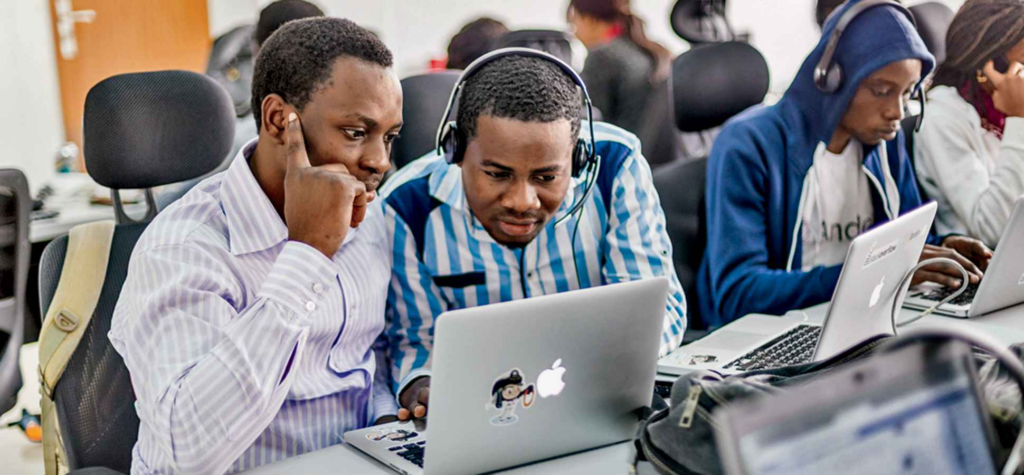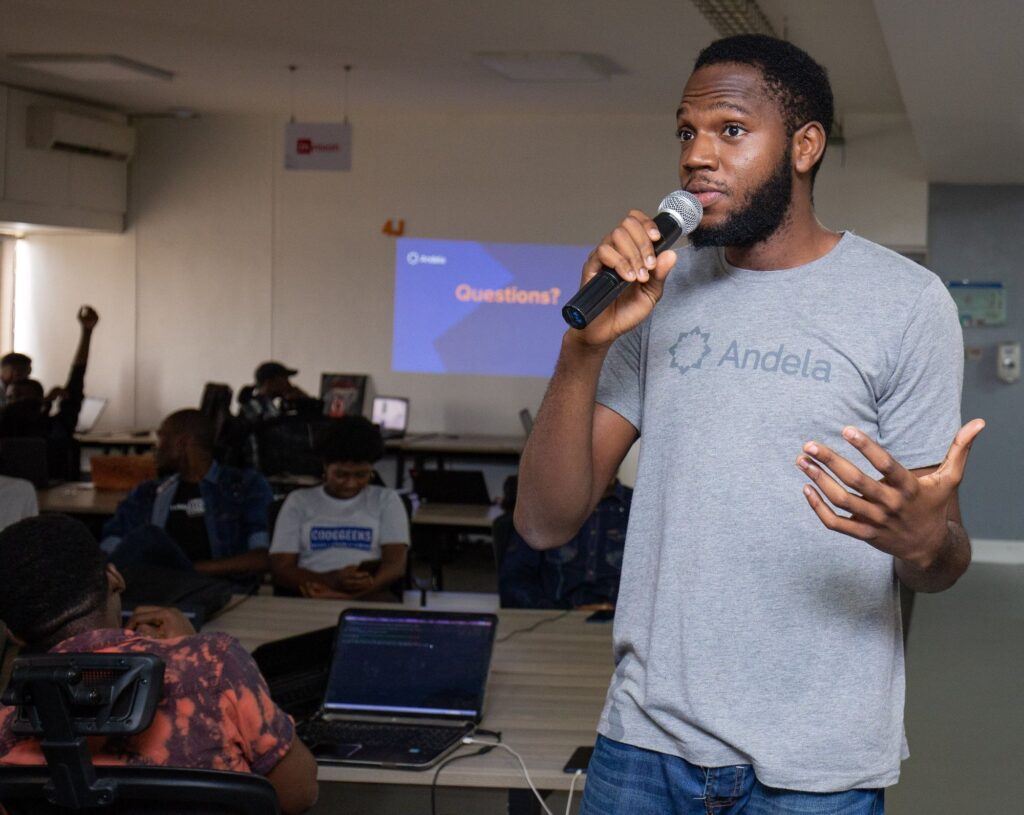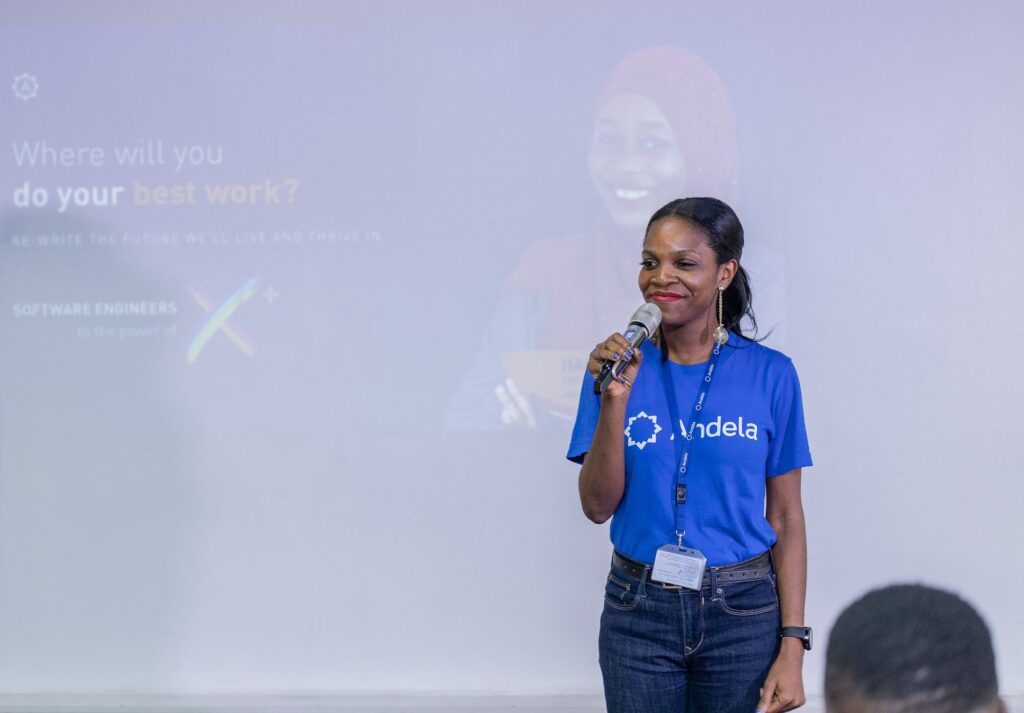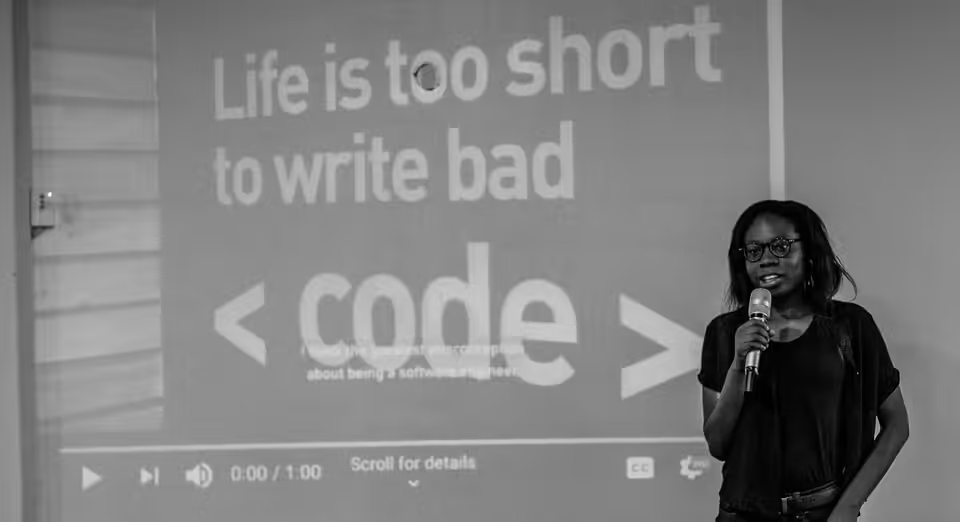Andela, the company building distributed engineering teams with Africa’s top software engineers, will now officially recruit mid and senior level developers directly into the company to match clients demand.
Before now, the Andela Fellowship (AKA Technical Leadership Program) was the most prominent mode of entry for developers into Andela. It focused on giving an intensive 6-month plus training to entry-level developers before placing them to work on partner projects.
In 2017, Developer.com and TechCrunch reported that fellows sign contracts to work for two years, but they are expected to stay for four years.
Over the course of these four years, fellows can grow to a higher grade marked by alphanumeric symbols. For instance, a developer in training (the entry stage) is called a D0 and the first stage of partner readiness is tagged D1, it goes on and on up until D4. Typically, salaries begin “low” but can rise to more than $30,000, developer.com says. Although, as at January, the CEO of Andela, Jeremy Johnson cited an average salary of $40,000 for developers after four years of joining the program.
Four years later, that person on average is earning over $40,000.
Salary starting low is because in the time developers are in-training, they do not bring in revenue for the company. The company spends invests in each D0 in training. However, as the developers move into higher cadres, they become more marketable and start earning money for the company.
In January, TechCrunch reported that Andela receives between $50,000 to $120,000 per developer. Corroborating what Jeremy told Financial Times, TechCrunch said that Andela “passes one-third of that directly on to the developer”.

In the event that a developer wants to leave Andela within the agreed two years, such a person would need to pay Andela a termination fee. This is akin to how employees who resign abruptly have to either forfeit benefits or pay their employer in lieu. The termination fee can be as high as $20,000 to cover Andela’s training cost and operational cost expended on such a developer, bearing in mind that even in their period of training, Andela was paying them a stipend.
One of the reasons developers leave is because they got an offer at a company that wants to hire them full-time. It won’t be unsurprising that as part of the developer’s sign-on agreement, the company has to pay Andela off. Although it doesn’t seem like a lot of Andela fellows go that route, as the company reports a retention rate of 98%, meaning their churn rate is low.
Why is Andela doing this now?
When an employer looks to Andela to hire technical talent, a team within Andela’s “back-office staff” works with such companies to define their business needs—which includes the seniority qualifications of the developer(s) required to work on such project or product. The emphasis on product is to show that Andela developers are not typically hired to work on just a “project” they are usually integrated as part of the technology teams of the companies they get placed to work with. So, often times, they travel to the partner’s company for an onboarding exercise and even participate in team events.

Although Andela now has over 1,000 developers trained, there is still a good percentage of them that are not client ready (think of those in D0). And since for every “one developer there are 4 US jobs”, Andela is always “under-staffed”.
As a response to the business demand, they had to hire very experienced software engineers called Senior Technical Consultants (STC) who then worked on client projects as technical team leads, alongside younger Andela developers. In this way, they were preparing their younger developers for future roles as team leads.
The STC contract was unlike that of the fellows and they command more money from clients, typically in the range of what their counterparts in the US are paid. So, think greater than $120,000.
“The move to recruit more senior technologists is an expansion of the company’s business model“, Andela said in a statement to benjamindada.com.
In a parallel effort, Andela has hired experienced developers to work on client projects without them having to go through the fellowship.
The business model is simple—the more developers Andela can place on client jobs the more revenue opportunities (breadth) the company has; where the more skill and experience a developer has determines how deep into the pockets of clients Andela can go.
From a client service point-of-view, Andela would be better placed to serve their clients if they have more of these experienced developers aboard.
So, how much does Andela make?
If you’ve ever found yourself asking this question, let’s go on a little journey.
Andela has 1,100+ developers across their hubs in Africa, 200+ customers paying an average of $85,000 per developer. That means, assuming Andela has been able to place only half of their developers (550) they will be earning $46.8 million per year. So, we can approximate their annual revenue to be $50 million.
Please note, this does not account for whether they have other revenue-generating verticals.
But to reach $100 million in revenue, Andela would need to earn a significantly higher pay per developer, say $100,000 on 500 developers, totalling an additional $50 million.
Thinking about all this together, then it begins to make sense as to why they would seek to hire 500 mid to senior level developers.
Andela has raised about $180 million from both venture capital firms and social enterprises
Andela is one of such companies “benefitting” from “Africa as a brand or selling point”, as they’ve attracted investments from both venture capital firms and social enterprises like the Chan Zuckerberg Foundation. Perhaps, rightfully so as the company’s presence in Africa has led to direct developments. The company itself contributes to the development of the community.

They have partnered with global tech companies to launch Andela Learning Communities (ALC) which enables Africa’s youth learn technical skills even without being part of the Andela fellowship. On the side, many of their fellows play crucial roles in the growing tech community. For instance, Innocent Amadi leads Facebook Developer Circles in Nigeria, Bolaji Olajide & Oluwadamilola Adebayo are teaching kids how to code via Teencode Africa. Many more are part of Africa’s largest group of software developers, forloop Africa.
“The most effective way to become the best in your field is to work on the most complex problems and work alongside the best people. Andela’s value proposition is that our engineers work on global problems, within global teams, and are connected to the best engineering community in Africa. By this, we are empowering people to grow exponentially and accelerate their careers“, says Omowale David-Ashiru, Country Director, Andela Nigeria.

Speaking on their drive to recruit more experienced developers, Omowale says “At Andela, we expect our Software Engineers to gain the skills, experiences and networks that will enable them to become innovators and techleaders in Africa and we are excited to now open up our recruitment funnel to diversify and enhance our talent pool”.
This decision to stuff their funnel with mid and senior developers was announced at a press conference—which is part of their Power of “X” campaign—on Tuesday in their Lagos office.

The event titled “An inclusive future for the next generation” was attended by popular faces in the Nigerian tech and media industry. The likes of Bankole Oluwafemi, Editor in Chief at TechCabal and Prosper Otemuyiwa, Co-organiser of forloop shared insights about the future of technology in Africa during their
fireside chat session. Andela’s Director of Developer Programs, Jolomi Otumara and Director of Partner Engineering, Olawumi Onawumi who also featured in the chat session, talked about Andela’s plans for the next generation of tech talent in Africa.
The race to training 100,000 developers in Africa is on and Andela has their work cut for them.
Aspiring senior software engineers at Andela can apply here.
In another article, we will talk about Andela’s valuation.
Get passive updates on African tech & startups
View and choose the stories to interact with on our WhatsApp Channel
Explore




